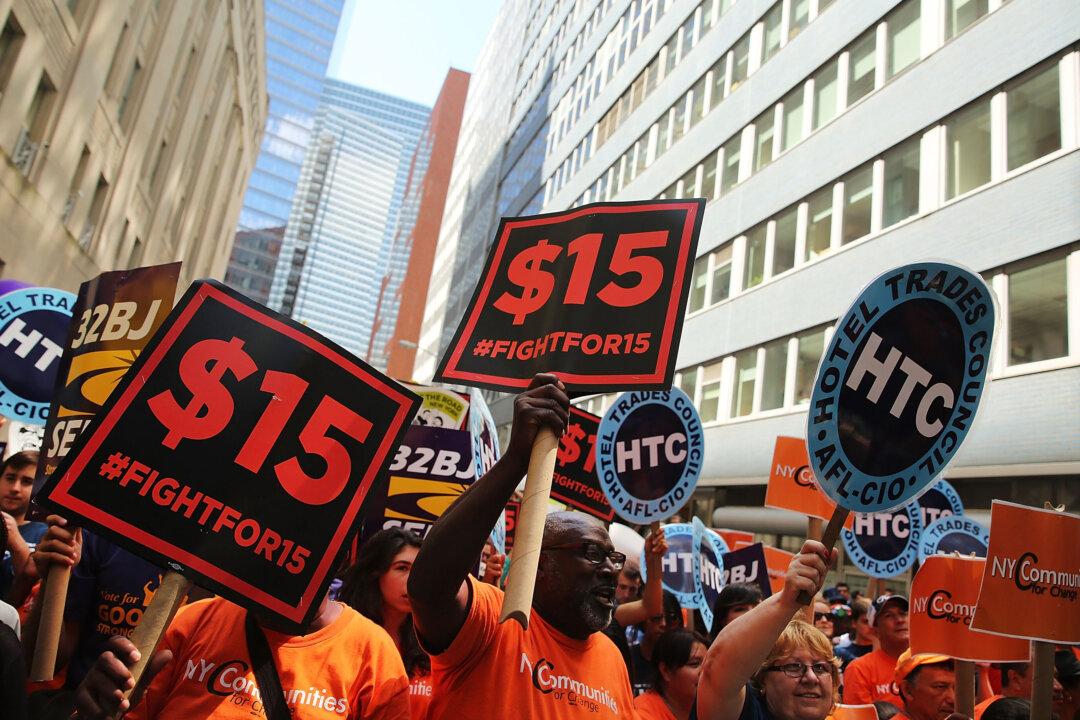Editor’s note: The Conversation asked a few of its regular writers to weigh in on what will (or should) be the key economic issues of 2016 and offer their predictions. Topping the list are the worsening plight of the middle class, a wager on wages growing again, and why we have less to fear than some of the White House hopefuls suggest.
The Middle-Class Meltdown
Mechele Dickerson, University of Texas at Austin
Middle-income households—those that earn $42,000 to $126,000—are shrinking in number and earning a smaller share of all U.S. income. This gutting of the middle class will only get worse if policymakers do nothing to stem it, which is why it will continue to be an important issue as we head toward the general election in November.
The Pew Research Center recently released a report that reveals that for the first time in almost 45 years, middle-income households now account for only 50 percent of all U.S. households. In 1971, 61 percent of American households were middle-income.
In contrast, the number of upper-income households rose from 14 percent in 1970 to 21 percent in 2014, while the number of lower-income households increased from 25 percent to 29 percent. (Lower-income households are defined as earning less than 67 percent of the median income of about $63,000, middle-income making 67 percent to 200 percent and higher-income households earning more than double.)
In other words, while the middle class has shrunk, there has been a dramatic increase in households that are either very rich or very poor. This polarization of incomes represents a seismic shift in the fabric of American life.
The share of overall income earned by rich households continues to climb and is almost as much as all other households combined. While 29 percent of total U.S. income went to rich households in 1970, that number soared to 49 percent by 2014.
At the same time, the share for middle-income households plummeted. They had 62 percent of aggregate income in 1970, but only 43 percent in 2014.
American workers, especially those without a college degree, are now less likely to hold middle- or high-wage jobs because most of the positions that have been created over the last two decades have been either high-skilled (and higher-income), or low-skilled (and lower-income). The middle is being squeezed out and left behind.
Changes in the composition and income of the middle class have created an economically polarized society. The most important issue in 2016, and one that presidential candidates will be forced to address, is how to reverse the worsening economic plight of middle-income Americans.
2016: The Year Wage Stagnation Ends
Thomas A. Kochan, MIT Sloan School of Management
The year 2016 could be the year the country ends its 30 years of wage stagnation and begins attacking income inequality.
The strengthening economy, along with the growing frustration that many are not sharing in it, has elevated wages to the top of presidential campaign debates, while workers and their advocates are already taking direct actions to press for wage increases.
The “fight for $15“ minimum wage battle is the most visible form of direct action, one mounted by a coalition of unions and community groups. It has already succeeded in raising wages in 14 states or localities and is on the 2016 agenda in 15 additional cities or states.
Across the country new forms of worker organizing are emerging, including a number that are putting information technologies to work to support workers.




